Spring snowmobiling in BC’s Tatshenshini-Alsek Provincial Park
One of BC’s most remote parks, Tatshenshini-Alsek Provincial Park, is best known for having some of the finest wilderness rafting and kayaking in the world. Established in 1993, the park covers 947,026 hectares (2.3 million acres or 3,656 square miles) and, with adjoining Kluane, Wrangell-St. Elias, and Glacier Bay National Parks, is part of the largest protected area in the world.
In the spring, summer, and fall, no motorized vehicles are allowed off the access road, the Haines Highway that runs 245 kilometers (152 miles) between Haines Junction, Yukon, and Haines, Alaska. During those seasons, the park offers, as well as the rafting, superb hiking, both on and off trails. Due to the park’s remoteness, hikers will meet very few if any other people.
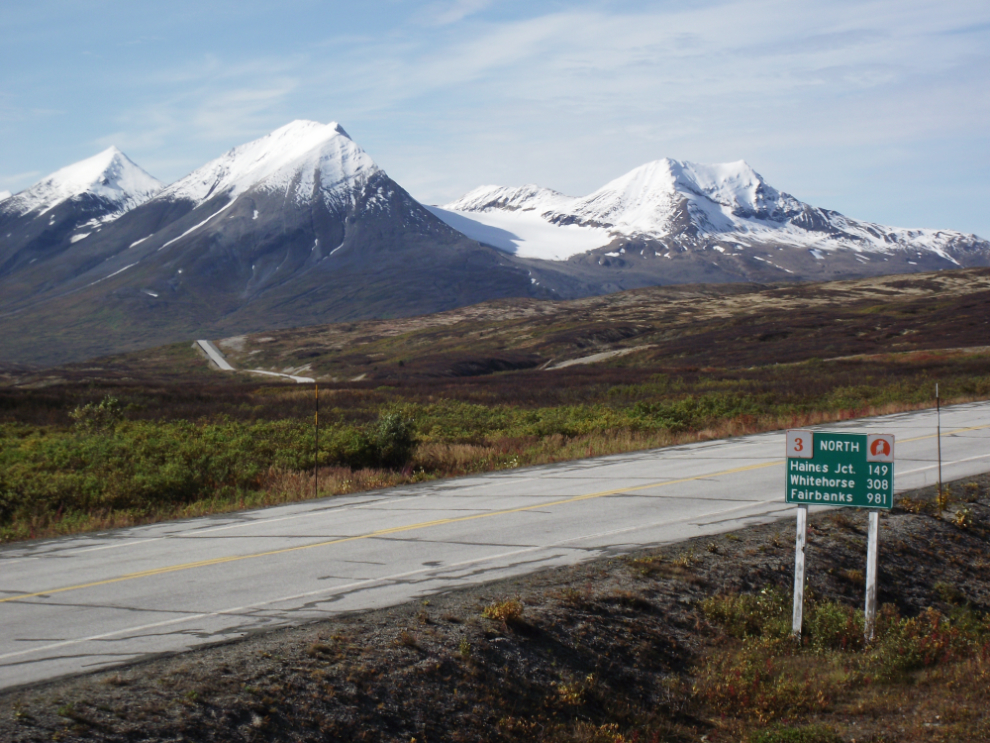
During the very long winter, a small part of the park gets fairly heavy use, as snowmobiles are allowed. The Easter long weekend in particular draws snowmobilers from all over the Yukon, Alaska, BC, and even Alberta to the Haines Summit, at 1,070 meters (3,510 feet) the highest point on the highway. From there, Haines is 95 km (59 mi), Haines Junction is 144 km (89.5 mi).
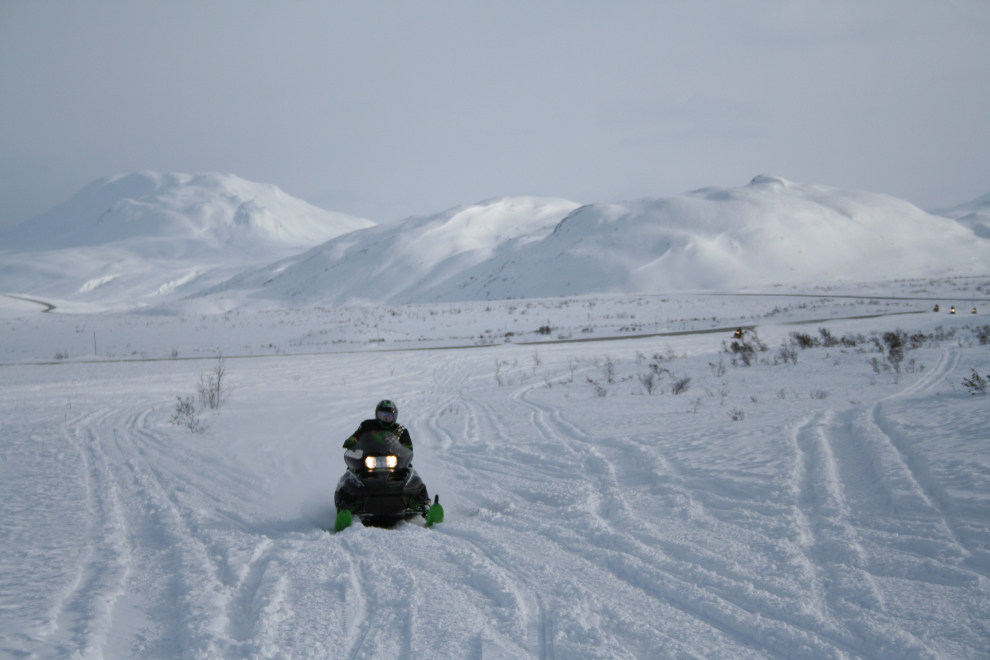
There are some basic rules for snowmobiling in the park, and it can only be done in a specific area along the highway, encompassing basically the first peaks and the next valley to the west of the highway, a distance of up to about 12 km (7.5 mi). To the east of the highway – to the left and including the peaks ahead in the next photo – snowmobiling is unrestricted. A a map of the snowmobile area is online (pdf, 2.84 MB).
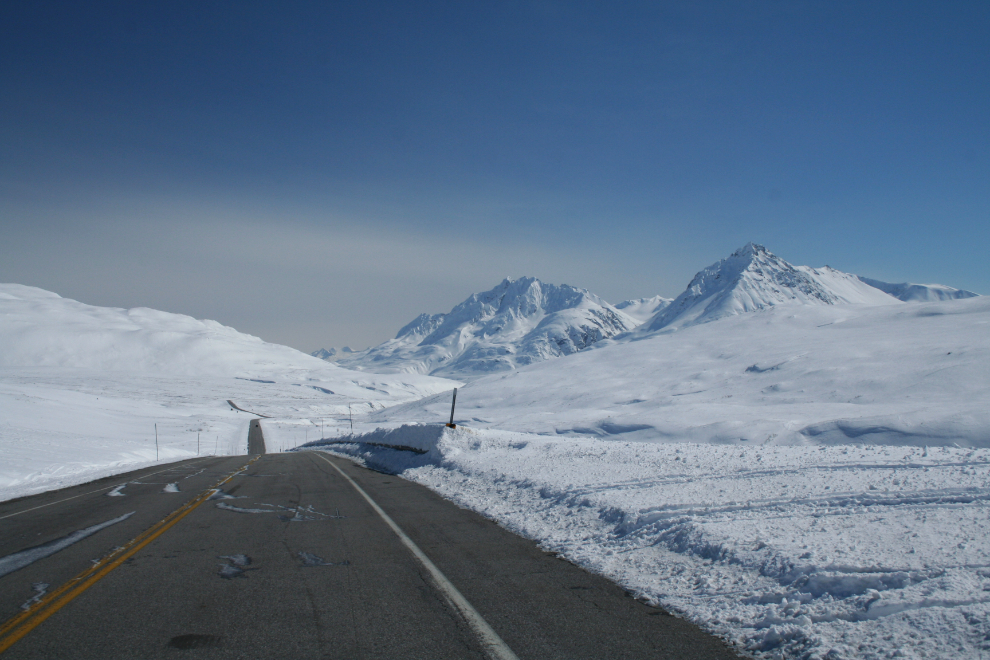
While snowmobiling is allowed along the Haines Highway for the entire 40 km (25 mi) that it forms the park’s eastern boundary, most riders go the the summit area. That’s where you are above the treeline and where the snow lasts the longest, but it’s also a huge social event for riders who want that as part of the experience. The highway shoulders and the many parking areas around the summit become a small city, with scores of RVs, some tent coffee shops, and even a temporary detachment of RCMP officers. The photo below shows perhaps 1/4 of the “city”.
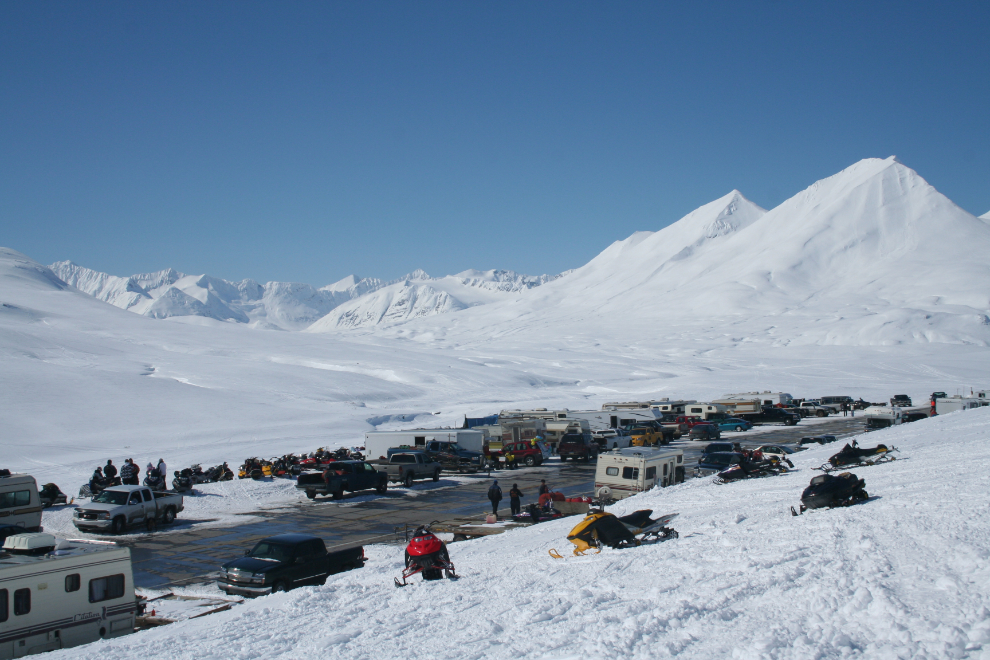
Between incredible snowmobiling, the company of many hundreds of people with the same interest, and the general good mood of Northerners due to the return of warm weather and lots of daylight, the atmosphere at “Snowmobile City” is always energetic and fun. It’s very much a family event, and children of all ages are part of that fun.
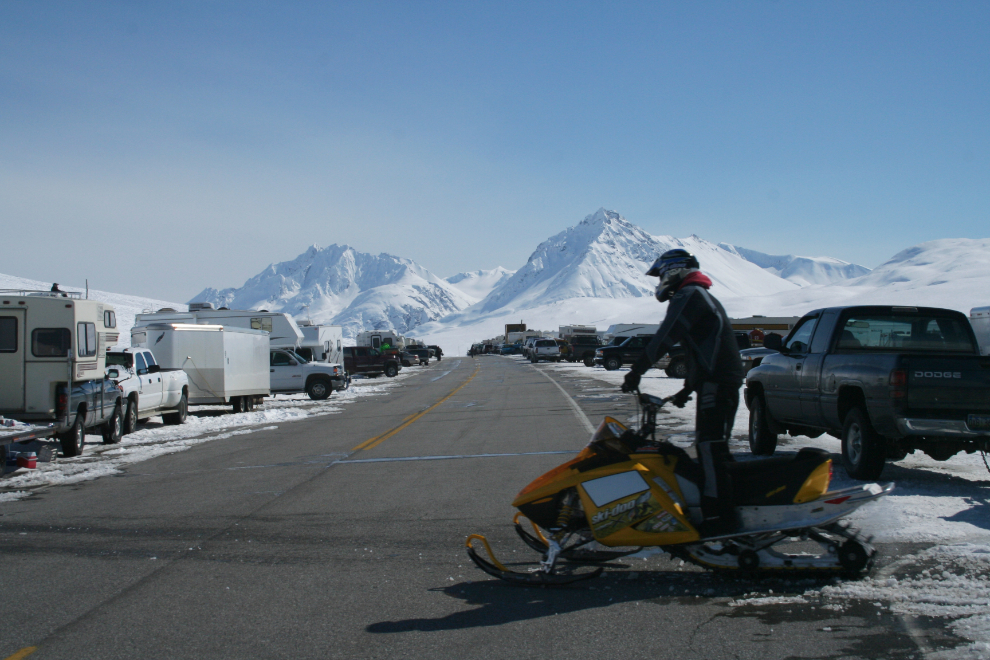
Locals seem to always enjoy seeing groups of visitors show up, even when it’s with a semi hauling 28 sleds and a charter bus full of riders. The sharing of information about the conditions that could be encountered, the best routes for a rider’s particular interests and skill level, and how to recognize the snowmobile-zone boundaries, is great to see.
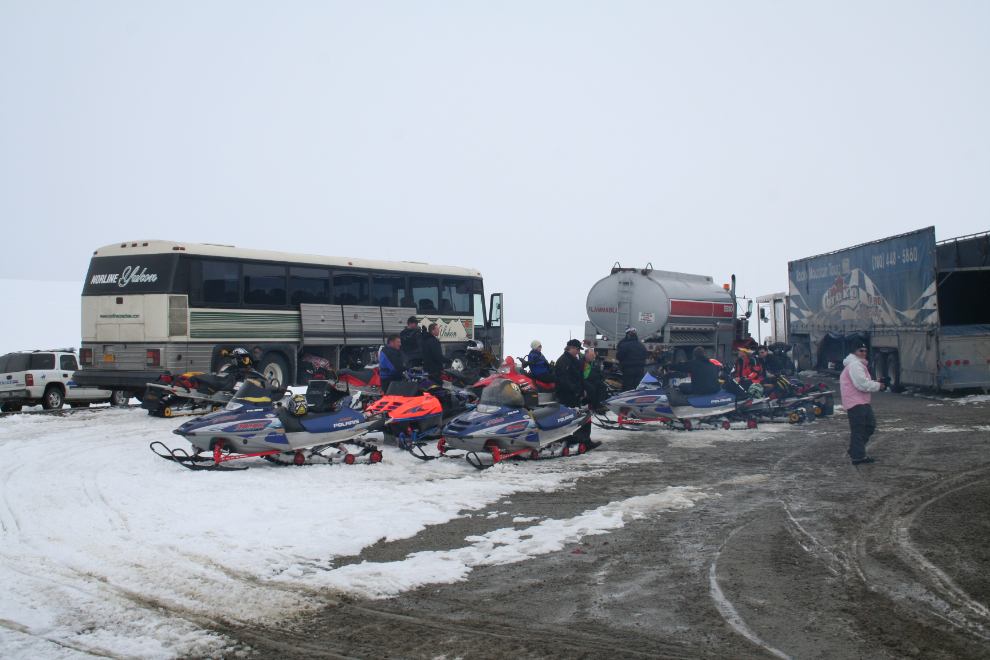
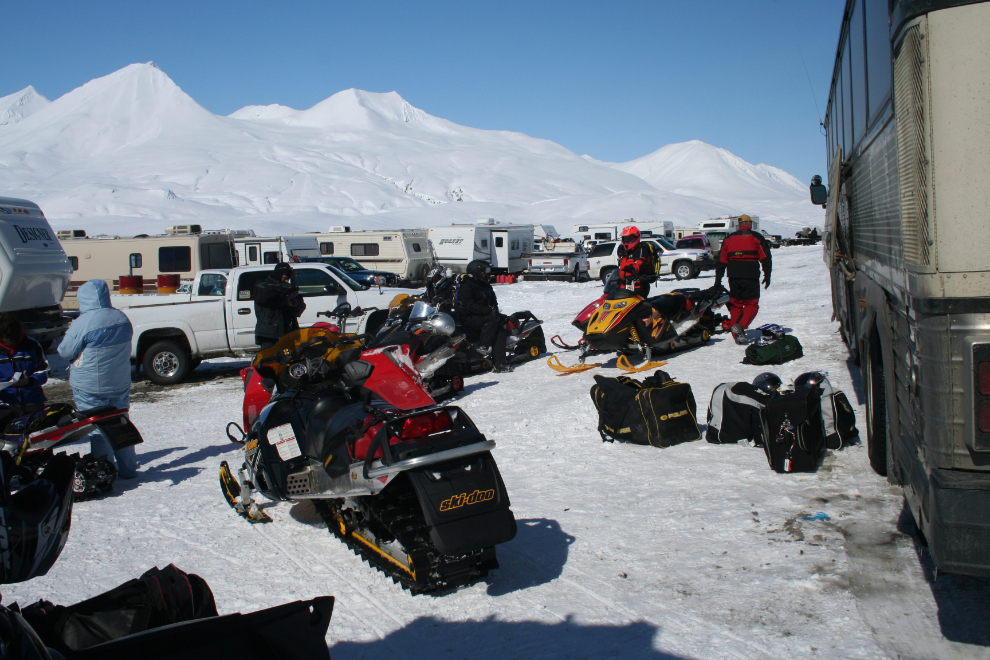
As is the case in mountain country everywhere, conditions can vary dramatically not only from day to day, but from hour to hour, and that fact needs to be kept in mind when planning a ride. When low visibility or flat light cause problems, some riders choose to stay in camp, others just explore (or head back to camp) more slowly and cautiously
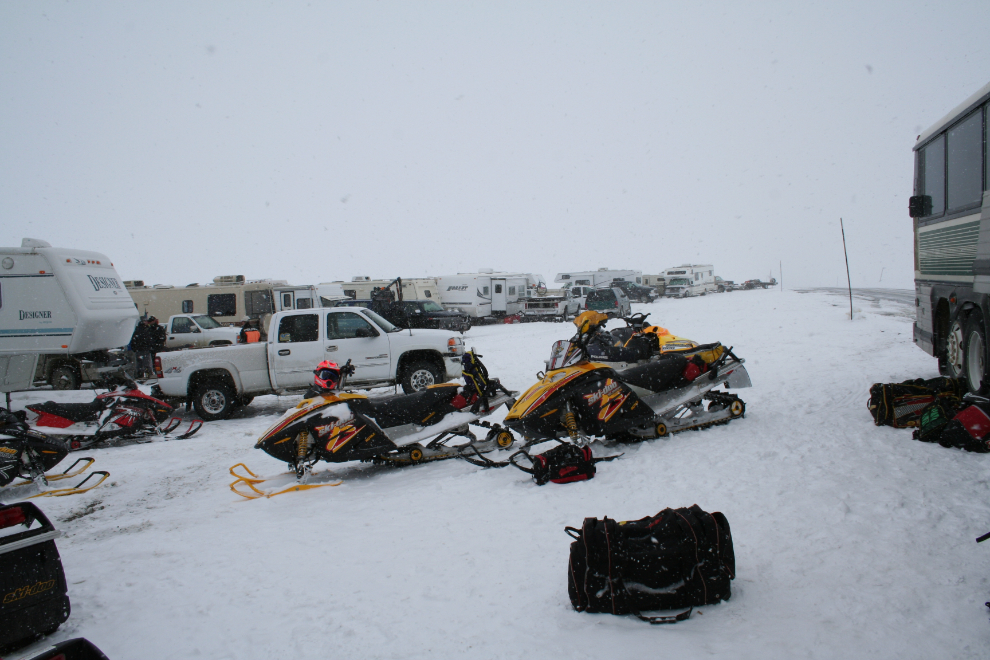
Every rider has their own ideas about what makes a good group to head into the backcountry with – the type of people in the group, the number of people, and perhaps even the type of machine. Whatever the number of people and machines, whether it’s two or twenty, getting past the first ridge and looking into a tiny part of what makes Tatshenshini-Alsek Provincial Park such a special place is a thrill that stops many riders to contemplate and discuss it all for a while before continuing.
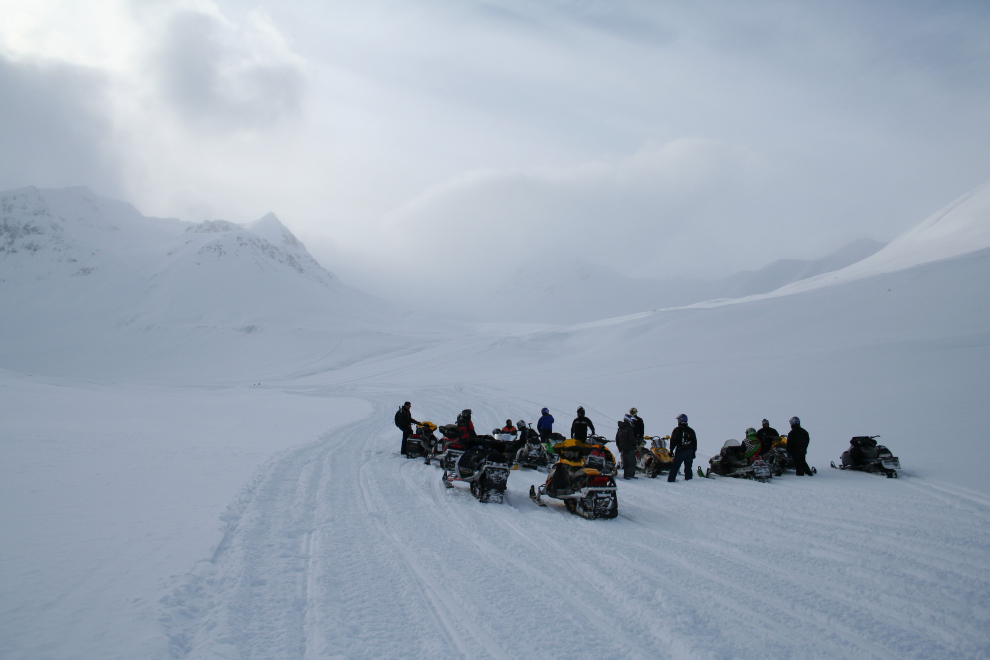
Many of the valleys in the summit area are huge, and a rider wanting a bit of either adventure or solitude, or just a new view, can take off on his own and still be in visual contact with the group.
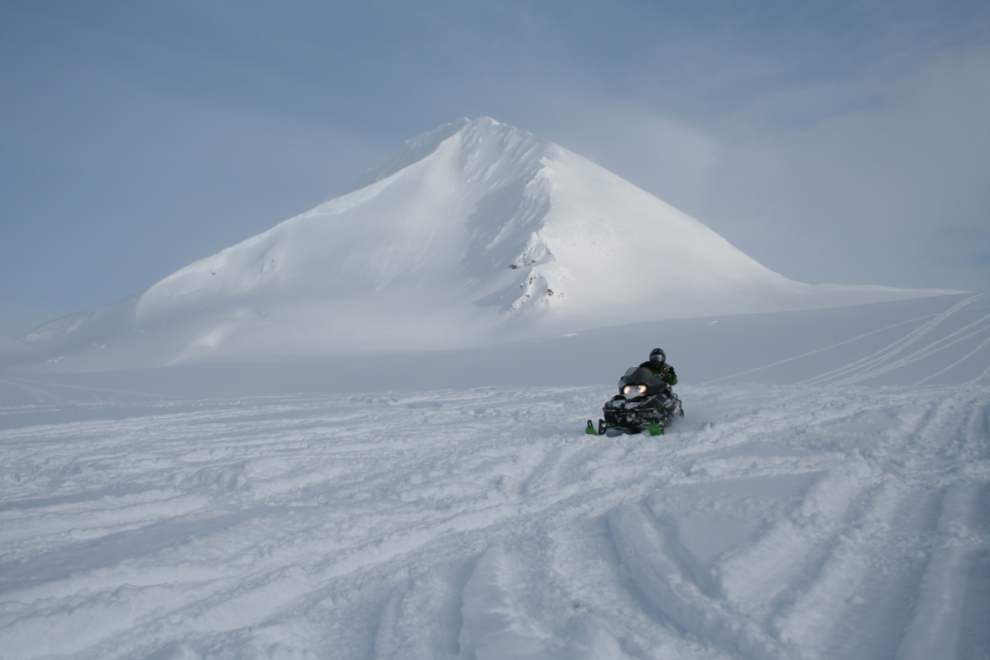
Within the snowmobile area of the park, some 60,000 hectares (230 square miles), there is an incredible variety of terrain, from small canyons to vast bowls, allowing for safe snowmobiling by riders of any age and any experience level.
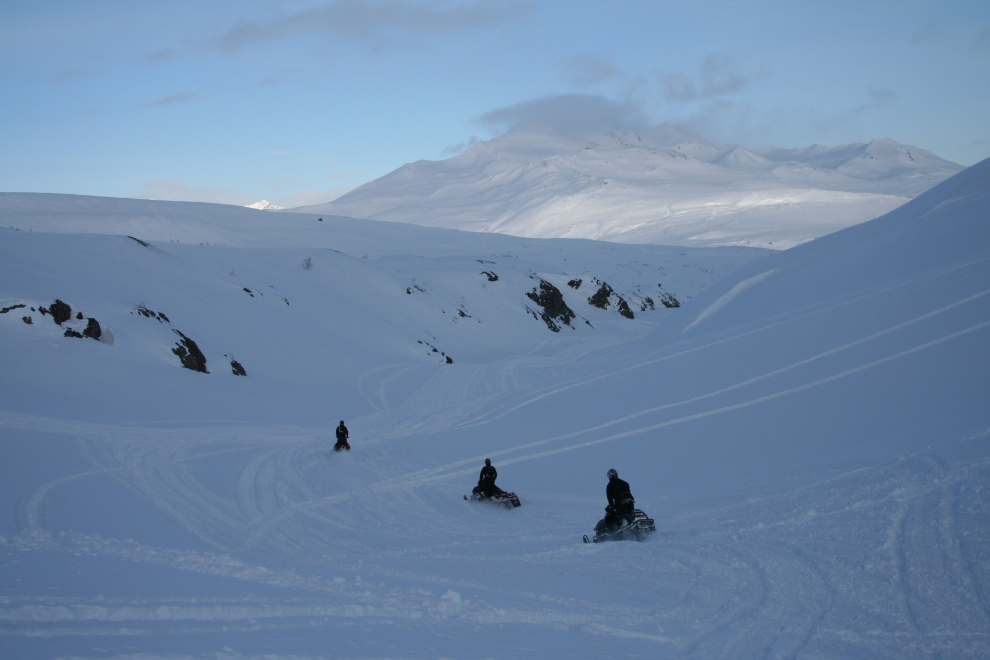
Many riders with experience in the area carry extra gas, knowing how easy it is to get drawn further and further into the park. Especially after a particularly long ride, or one that went into un-tracked country, it’s always fun to get back to camp to share the adventure.
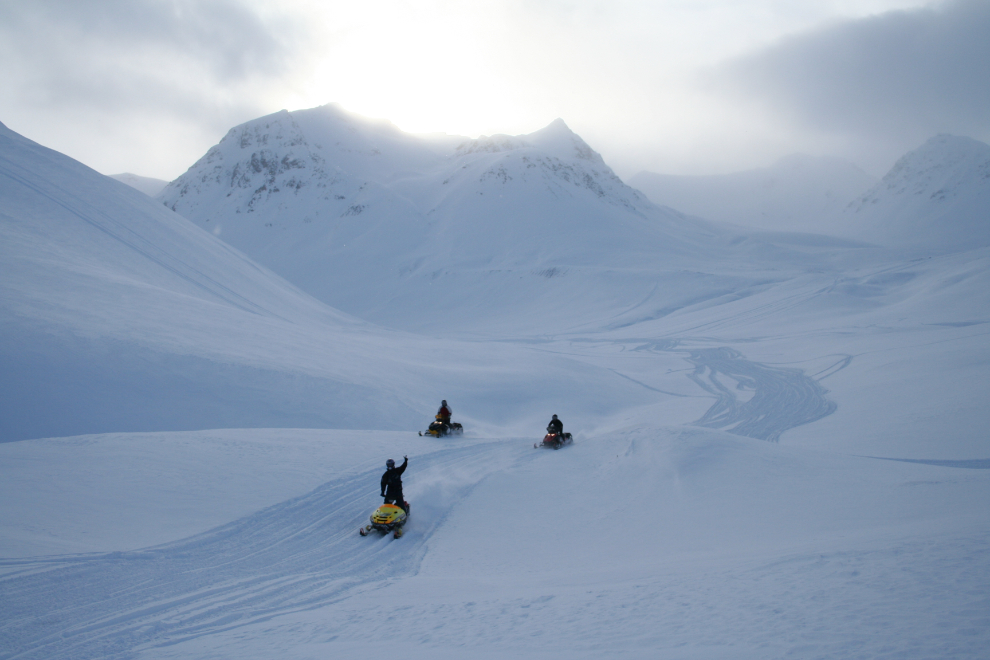
Sitting at the edge of the slope that drops off from one of the summit parking areas, the number of options for riding is virtually infinite, whether you just want to go for a half-hour, a full day, or even a multi-day snowmobile camping trip.
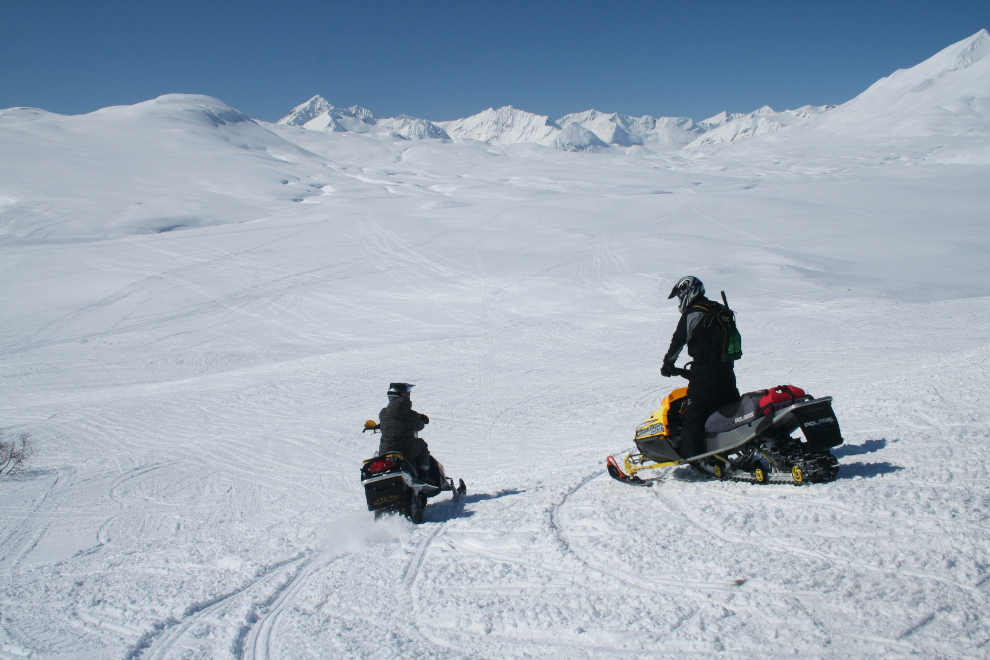
It’s hard for still photos to really show you what snowmobiling in Tatshenshini-Alsek Provincial Park is like. Darryl Tait of Whitehorse filmed a 3-minute video of some of the snowmobiling and snowboarding action around the summit on the Easter weekend in 2015, that will give you a better idea – click here to watch it.